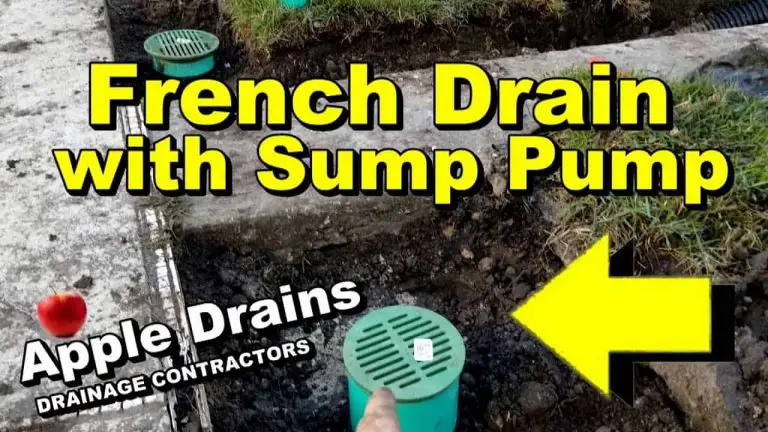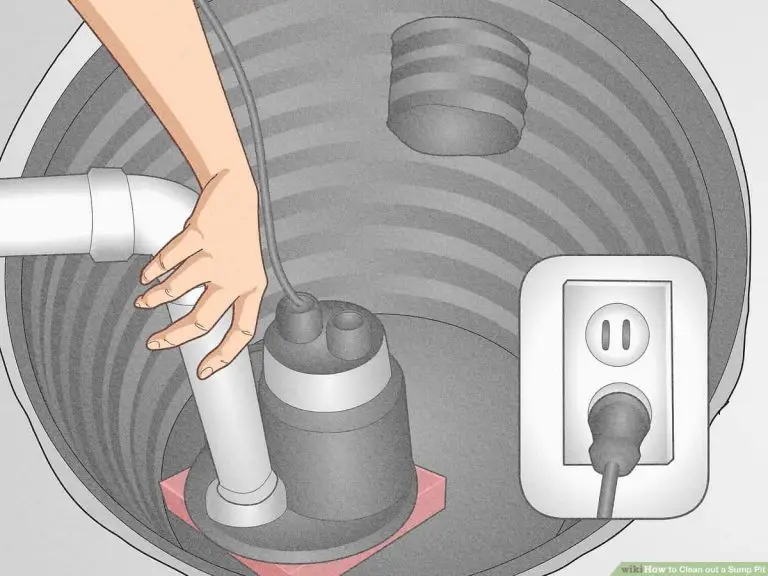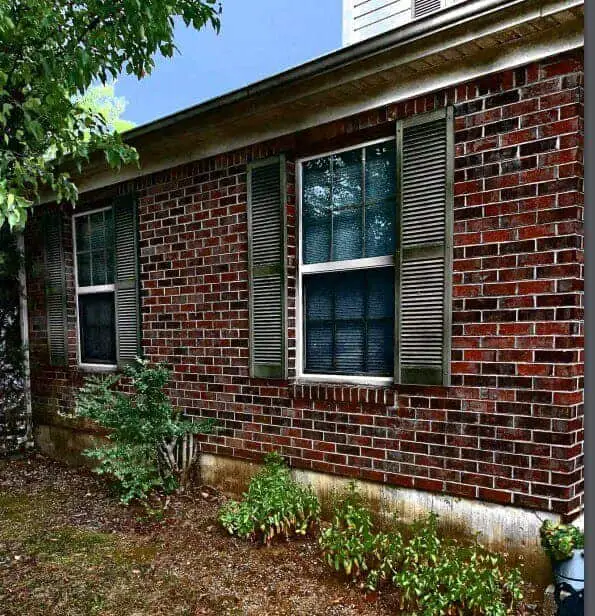Why Do Basements Have Sump Pumps
A sump pump is a device that is installed in the basement of a home. The main purpose of a sump pump is to remove water that has accumulated in the basin, or sump, and to prevent flooding. Basements are susceptible to flooding because they are below ground level and often have poor drainage.
When it rains or there is a heavy snow melt, water can seep into the basement through cracks in the foundation or walls. A sump pump will help to remove this water before it causes any damage.
Basements are prone to flooding and water damage, so having a sump pump is essential to keeping your basement dry. Sump pumps are used to remove water that has accumulated in the sump basin, which is usually located in the lowest point of your basement. The pump then discharges the water outside of your home.
There are several reasons why basements tend to flood. One reason is that they are usually built below ground level, so they are at a lower elevation than the rest of your home. This means that water can easily seep into the basement if there is any sort of leak or crack in the foundation.
Additionally, basements are often poorly ventilated, which can cause condensation and moisture buildup.
Another common reason for basement flooding is heavy rains or storms. When it rains heavily, the groundwater level rises and can put pressure on your basement walls and floors.
If there is any sort of crack or hole in your basement walls or floors, this pressure can cause water to seep into your home. In some cases, storm sewers can also backup and flood basements with sewage-contaminated water.
While having a sump pump won’t completely eliminate the risk of basement flooding, it will greatly reduce it.
Sump pumps should be installed by a professional plumber to ensure that they are properly installed and functioning correctly.
6 Things Sump Pump Owners NEED to Know
Avoid House With Sump Pump
Most homeowners are familiar with the potential for flooding in their basement or crawl space. But what many don’t realize is that a home with a sump pump is also at risk for water damage.
A sump pump is designed to remove water from your home, but if it fails, the water can quickly build up and cause significant damage.
There are several things you can do to avoid this problem:
1. Check your sump pump regularly to make sure it’s working properly.
2. If you have a power outage, be sure to use a backup power source for your sump pump.
3. Keep your gutters and downspouts clean and free of debris so they can effectively drain water away from your home.
4. Inspect your home regularly for any signs of leaks or moisture problems so you can address them before they become serious issues.
Do All Houses With Basements Have Sump Pumps
Most houses with basements have a sump pump. The sump pump is located in the lowest part of the basement and is used to remove water that has accumulated in the sump pit. The water is pumped out of the pit and away from the house.
Sump pumps are used to prevent basement flooding and to protect homes from water damage.
Why Would a House Have 3 Sump Pumps
If you live in an area that’s prone to flooding, you know how important it is to have a sump pump. But what happens if one sump pump isn’t enough? In some cases, homes may have three sump pumps to ensure that they can stay dry during a flood.
There are a few reasons why a home might need three sump pumps. First, the house may be located in an area with a high water table. This means that the groundwater level is close to the surface, which can lead to flooding.
Having three sump pumps allows the homeowner to have backup in case one or two of the pumps fail.
Another reason for having three sump pumps is if the home is located on a slope. If there’s heavy rain, the water can run down the slope and into the basement.
Having multiple sump pumps ensures that there’s always one working pump to keep the basement dry.
Finally, some homes just have larger basements that require more than one sump pump to keep them dry. If your basement is over 1,000 square feet, you may need more than one pump to prevent flooding.
If you live in an area that’s susceptible to floods, it’s important to have a reliable sump pump system in place. And in some cases, having three sump pumps is necessary to protect your home from water damage.
Sump Pump Alternatives
Are you in the market for a new sump pump? If so, you may be wondering if there are any alternatives to the traditional sump pump. After all, sump pumps can be expensive and they require electricity to operate.
Fortunately, there are a few alternatives to traditional sump pumps that you may want to consider. Here are a few of the most popular options:
1. Battery-powered sump pump – This type of sump pump is powered by batteries, making it ideal for homes that lose power frequently or that are located in remote areas.
Just be sure to keep extra batteries on hand in case of an emergency!
2. Water-powered sump pump – These pumps are powered by water pressure, making them perfect for homes with a well or other source of water pressure. They do require some regular maintenance, but they’re typically much more reliable than battery-powered models.
3. Solar-powered sump pump – Solar-powered sump pumps are becoming increasingly popular as solar technology continues to improve. These models use solar panels to convert sunlight into electrical energy, which is then used to power the pump. Solar-powered pumps are great for eco-conscious homeowners who want to reduce their reliance on fossil fuels.
How Does a Sump Pump Work
A sump pump is a device that is installed in the basement of a home. It is used to remove water that has accumulated in the sump pit. The water is typically pumped out of the pit and away from the home.
Sump pumps are used to prevent flooding and to protect homes from water damage.
Sump pumps typically have two parts: a float switch and a pump. The float switch is activated when water levels reach a certain point, and it turns on the pump.
The pump then removes the water from the pit and discharges it away from the home.
Sump pumps can be powered by electricity or by batteries. If there is a power outage, battery-powered sump pumps will continue to operate.
It is important to have a backup power source for your sump pump in case of an emergency.
Where Does Sump Pump Water Go
Sump pumps are often used to remove water from basements that have been flooded. The water is typically pumped out through a hose or pipe to a location away from the house, such as a storm drain. In some cases, the water may be discharged into a dry well.
Do Florida Homes Have Sump Pumps
If you live in Florida, chances are you have a sump pump. These devices are designed to remove water from your home that has accumulated in the lowest part of your property, typically in a pit or basin. Sump pumps are common in areas that experience heavy rains or flooding, and they can be a lifesaver when it comes to preventing water damage to your home.
Here’s what you need to know about sump pumps in Florida homes.
Sump pumps are typically installed in the lowest part of a home, often in the basement or crawlspace. They work by pumping water out of the area and away from the foundation of the house.
This helps to prevent flooding and water damage.
Sump pumps come in two different types: submersible and pedestal. Submersible pumps are submerged in water and sit at the bottom of the sump pit.
Pedestal pumps are not submerged; they sit on a platform above the pit.
Sump pumps must be regularly maintained to ensure they are working properly. This includes making sure there is no debris blocking the intake screen and that the discharge pipe is clear.
It’s also important to check that the float switch, which turns the pump on and off, is functioning correctly.
If you live in Florida, chances are you have a sump pump – but do you know how it works? Sump pumps play an important role in preventing flooding and water damage by pumping water out of low-lying areas around your home’s foundation.
Keep yours well-maintained with regular cleanings and check-ups, and it will provide years of reliable service!

Credit: www.homesforheroes.com
Should All Basements Have a Sump Pump?
A sump pump is a device that is installed in the basement of a home that helps to prevent flooding by pumping water out of the basement and away from the foundation. While most basements will never experience flooding, those that are located in areas with high water tables or are prone to heavy rains may benefit from having a sump pump installed.
There are two types of sump pumps: submersible and pedestal.
Submersible sump pumps are designed to be placed entirely within a pit that has been dug for this purpose, while pedestal sump pumps sit outside of the pit on a raised platform. Both types of sump pumps work by using an electric motor to power a impeller, which then forces water out of the basement through a discharge pipe.
So, should all basements have a sump pump?
It really depends on the individual situation. If you live in an area with a high water table or are susceptible to heavy rains, then installing a sump pump could save you from significant damage in the event of flooding. However, if your basement is dry and has never flooded before, then you may not need one.
Ultimately, it’s up to you to decide whether or not installing a sump pump is right for your home.
Why Do Basements Need Sump Pumps?
Basements are susceptible to flooding for a variety of reasons. Heavy rains can overload storm drains and cause water to back up into your basement. A broken pipe or appliance, clogged gutters, or a faulty sump pump can also cause basement flooding.
Sump pumps are installed in basements to help prevent flooding by removing water that has accumulated in the basin of the sump pit. The pump kicks on automatically when the water level in the pit reaches a certain height and pumps the water out of the basement and away from the home.
Should I Avoid Buying a House With a Sump Pump?
A sump pump is a device that is installed in the basement of a home that helps to remove water that has accumulated in the basement. The water is typically pumped out of the basement and away from the home through a drainage system. While sump pumps can be beneficial, there are some things to consider before purchasing a home with one.
Sump pumps can be expensive to install and maintain. If you are considering buying a home with a sump pump, be sure to factor in the cost of installation and maintenance into your budget. In addition, sump pumps require electricity to operate, so if there is an electrical outage, the pump will not work and your basement could flood.
Another thing to keep in mind is that while sump pumps can help to remove water from your basement, they will not prevent water from entering your basement in the first place. If you live in an area with high groundwater levels or frequent flooding, a sump pump may not be enough to protect your basement from flooding. In these cases, it is important to have a backup plan in place (such as sandbags) in case your primary method of protection fails.
If you are considering buying a home with a sump pump, weigh the pros and cons carefully before making your decision. Sump pumps can be helpful but they are not foolproof; make sure you understand all of the risks involved before making any decisions about purchase or installation.
What Happens If You Don’T Have a Sump Pump?
If you don’t have a sump pump, your basement is at risk for flooding. A sump pump is a vital part of any home’s flood prevention system. It is installed in the lowest part of your basement and collects water that has seeped in through cracks or other openings.
The water is then pumped out of the basement, keeping your home dry and free from flooding.
Conclusion
Most basements are prone to flooding due to their location underground. To combat this, many homeowners install sump pumps in their basements. Sump pumps work by pumping water out of the basement and into a drain or away from the home.
This prevents the basement from flooding and helps to keep it dry.





